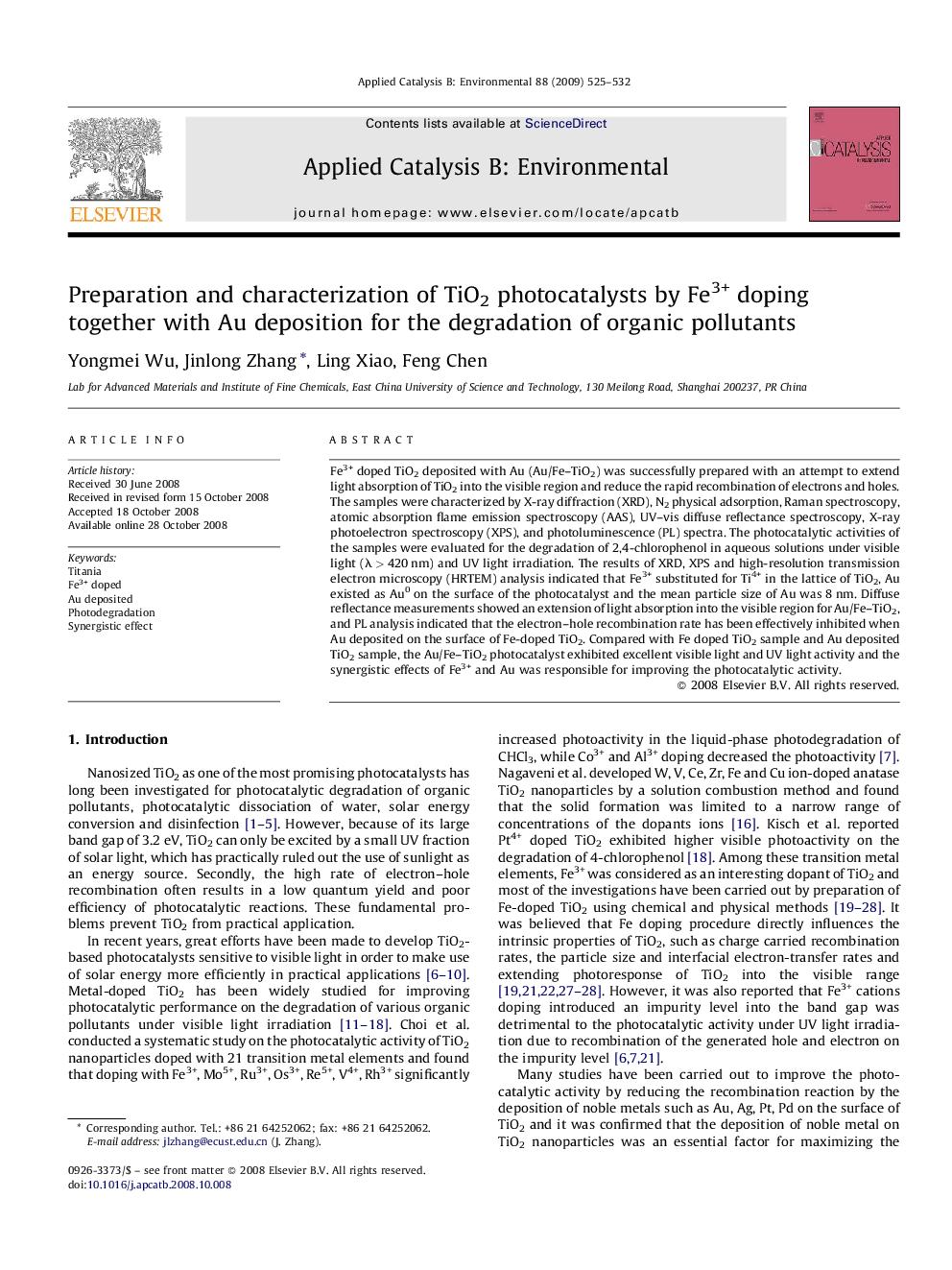| Article ID | Journal | Published Year | Pages | File Type |
|---|---|---|---|---|
| 48004 | Applied Catalysis B: Environmental | 2009 | 8 Pages |
Fe3+ doped TiO2 deposited with Au (Au/Fe–TiO2) was successfully prepared with an attempt to extend light absorption of TiO2 into the visible region and reduce the rapid recombination of electrons and holes. The samples were characterized by X-ray diffraction (XRD), N2 physical adsorption, Raman spectroscopy, atomic absorption flame emission spectroscopy (AAS), UV–vis diffuse reflectance spectroscopy, X-ray photoelectron spectroscopy (XPS), and photoluminescence (PL) spectra. The photocatalytic activities of the samples were evaluated for the degradation of 2,4-chlorophenol in aqueous solutions under visible light (λ > 420 nm) and UV light irradiation. The results of XRD, XPS and high-resolution transmission electron microscopy (HRTEM) analysis indicated that Fe3+ substituted for Ti4+ in the lattice of TiO2, Au existed as Au0 on the surface of the photocatalyst and the mean particle size of Au was 8 nm. Diffuse reflectance measurements showed an extension of light absorption into the visible region for Au/Fe–TiO2, and PL analysis indicated that the electron–hole recombination rate has been effectively inhibited when Au deposited on the surface of Fe-doped TiO2. Compared with Fe doped TiO2 sample and Au deposited TiO2 sample, the Au/Fe–TiO2 photocatalyst exhibited excellent visible light and UV light activity and the synergistic effects of Fe3+ and Au was responsible for improving the photocatalytic activity.
